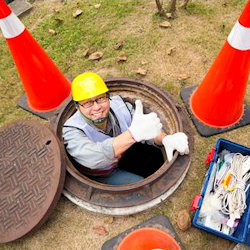Definitions
North American Differences
As we learned earlier, OSHA requires that confined spaces must be large enough for bodily entry, but in Canada, confined spaces need not be large enough for the whole body to enter. Therefore, the Canadian definition is considered more protective than the OSHA definition.

Below are three good reasons why the Canadian definition is more protective:
- Workers have been killed in a confined space after sticking their heads through a hatch or lid.
- Workers have also been killed in rather shallow trenches.
- To have a fatal confined space accident, all it takes is a trench or ditch a couple of feet (or a meter) in depth, and a heavier-than-air hazardous atmosphere.
Also, according to OSHA, a confined space must have limited access or egress, such as hatches or covers, but in Canada, there is no such requirement.
The United States and Canada both require that a confined space must not be designed for human/employee occupancy.
In Canada, all confined spaces must have the potential for developing a hazardous atmosphere, whereas OSHA does not include this requirement in their definition for a NPRCS.
In this course, we will focus on confined space entry as defined by OSHA.
Reasons for Entering Confined Spaces
Entering a confined space may be done for various reasons.
- It is done usually to perform a necessary function, such as inspection, repair, maintenance (cleaning or painting), or similar operations which would be an infrequent or irregular function of the total industrial activity.
- Entry may also be made during new construction. The most difficult confined space entries to control is that of unauthorized entry, especially when there are large numbers of workers and trades involved, such as welders, painters, electricians, and safety monitors.
- A final and most important reason for entry would be emergency rescue. This, and all other reasons for entry, must be well planned before initial entry is made and the hazards must be thoroughly reviewed.
Knowledge Check Choose the best answer for the question.
1-3. Which type of confined space entry is listed as the most difficult to control?
You forgot to answer the question!
